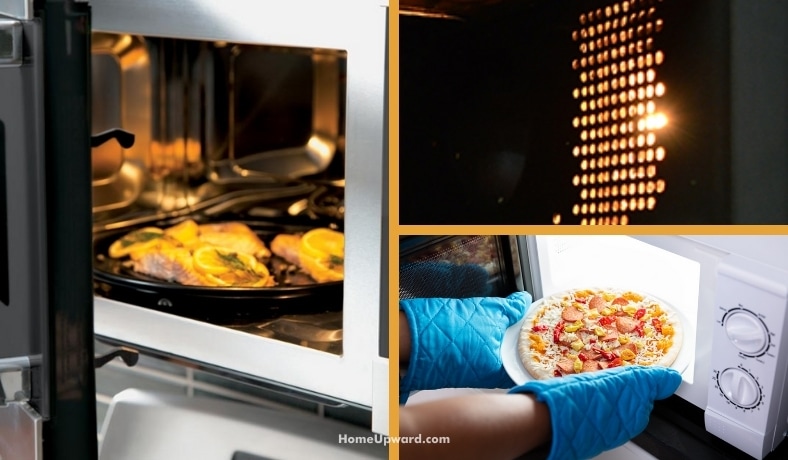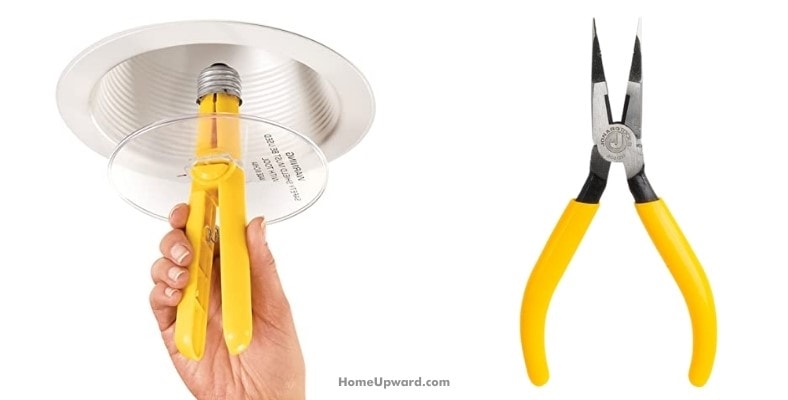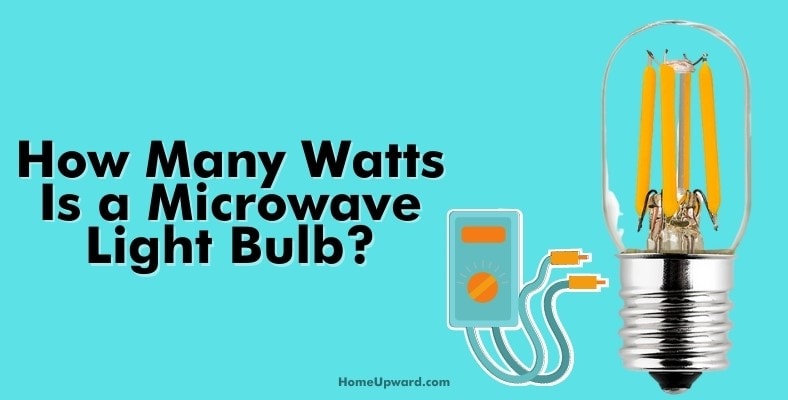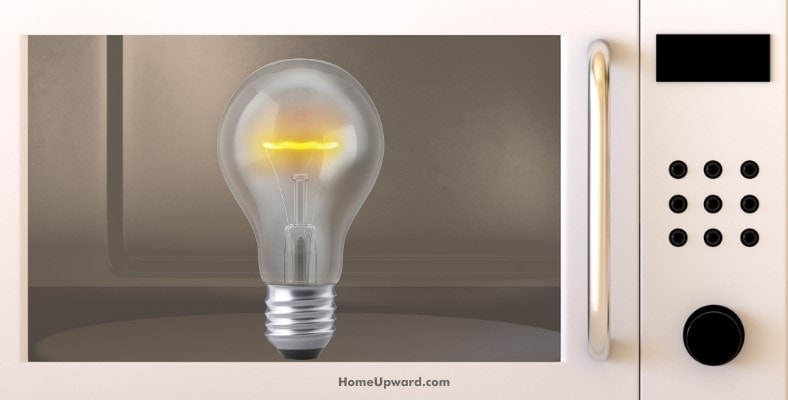Every so often, a light bulb blows out in a microwave. Fortunately, replacing a broken bulb can be a simple process able to be done with a set of common tools, such as a screwdriver and needle-nose pliers.
Here’s everything you need to know before you change a microwave light bulb.
Contents
How to Change a Light Bulb in a Microwave
So, if you try to break down a microwave without proper training or experience, you expose yourself to the risk of a dangerous shock. Leave the major repairs to the professionals. However, changing a light bulb is a basic repair and can be done safely.
If you only address this isolated concern without touching other parts of the microwave, you can expect a safe and relatively straightforward process.
1. Getting started
First, unplug your microwave. Then locate the light bulb in the microwave.
Newer models and built-in microwaves typically have the light bulb near the front next to the control panel. If this is the case, you can unscrew the screws mounting the front grille to reach the bulb.
Older microwaves or standalone models can be a little trickier. These types of microwaves might have a light bulb located in the back. If this is the case, you need to remove the microwave cover.
To remove the microwave cover, unscrew the back panel of the appliance. If the manufacturer used security screws for the panel’s mounting, a step taken for added safety, you’ll need to find a matching security screw set to remove them.
There are also occasions where the light bulb is attached to a light socket positioned in a way that blocks you from accessing the bulb. Often, the light socket can be easily removed by unscrewing the screws mounting it. Other microwave models might have the light socket secured by metal tabs. Use pliers to unbend the metal tabs to release it.
2. Unscrew the bulb
Once you can safely reach the light bulb, carefully unscrew it from the socket. Microwave light bulbs are small and fragile, so for added safety, you can use protective gloves or a plastic bag to cover the bulb in case it shatters while you’re twisting it.
Once you’ve removed it you can insert the new one.
3. Replace the old bulb
Insert the new bulb and firmly but carefully screw it back into place. You’ll only need a small amount of force so don’t try to overtighten. (Overtightening light bulbs can cause their glass dome to break off sometimes.)
How To Get a Broken Bulb Out of a Microwave Socket
Since there could be loose or small pieces of glass, make sure to put on a pair of protective gloves before replacing a broken bulb. If you’re replacing a light bulb because it broke or shattered, you can use two tools to remove the bulb’s base from the socket.
Broken Bulb Extractor
Broken bulb extractors come in different shapes and sizes. This tool is available for purchase at hardware stores or online. All you have to do is measure the width of the bulb’s base and find an extractor that fits this size.
Some broken bulb extractors also look like pliers. You can insert them into the bulb base and expand their width to unscrew the base from the socket.
Needle-Nose Pliers
Using a pair of needle-nose pliers is another popular method because it’s a common tool, and people might not want to purchase a broken bulb extractor.
There are a couple of ways to remove a light bulb base using needle-nose pliers.
First, you can insert the pliers in the center of the bulb’s base. Then, open up the pliers so they fit tightly within the base. Next, turn the pliers counterclockwise to unscrew the bulb.
Sometimes the metal base was twisted on crookedly and won’t budge. In this situation, make sure to first remove as much glass attached to the base as possible. Then, use the pliers to pinch the edge of the metal base and twist the pliers to bend the shape of the base. Work your way around until you can feel the base loosen. Then, completely twist the base out.
Where to Buy Microwave Light Bulbs
It’s easy to find microwave light bulbs. You can go to a hardware store, shop online, or contact the microwave manufacturer. Once you know the replacement light bulb size, you can compare prices with different providers for the most affordable option.
What Size Bulb Do I Need?
When you look at the name of a lightbulb, you’ll often see a set of letters paired with a number, such as a “T8 intermediate E17 base” light bulb. Bulb size, base type, and width typically define light bulbs. Therefore, “T8 intermediate” refers to the bulb shape.
Manufacturers use style and size (in millimeters) to categorize light bulb bases. Many bulbs have an Edison screw, abbreviated with an “E.” Therefore, an E17 base is a base using an Edison screw and measuring at 17 millimeters.
You can refer to sizing charts to find the name of your replacement light bulb. However, it might be easier to contact the microwave manufacturer for light bulb information. If your bulb is intact, you can also take it to a hardware store and ask an employee to help identify the bulb type.
How Many Watts Is a Microwave Light Bulb?
Most microwave light bulbs range between 20 watts and 40 watts. It’s essential to have the correct wattage because exceeding the maximum wattage will cause overlamping. Overlamping can overheat and melt a fixture, which can lead to permanent damage or an electrical fire.
Can You Use an LED Bulb in a Microwave?
There are concerns about using an LED bulb in a microwave because these types of bulbs contain plastic. Microwaves can emit very high heat that can melt plastic.
However, it’s safe to use LED light bulbs for microwaves. These bulbs are in a protective cavity within the microwave and covered by a metal mesh that deflects a microwave’s radiation waves. On top of that, a cooling fan keeps warm air from encompassing the light bulb so it doesn’t overheat.
Some LED light bulbs also are standard in microwaves. They are a great option to consider because they save energy and last longer than traditional incandescent light bulbs.
Incandescent bulbs also have a thin metal base. This base can bend easily, which can make it difficult to replace a broken light bulb. You won’t have that problem with an LED bulb. LED bulb bases are sturdier, so they are much easier to remove if their replacement is necessary.






